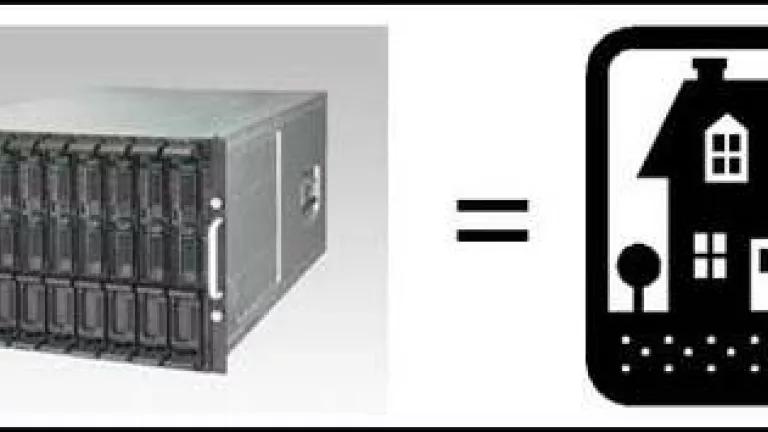
They are the literal workhorses of the internet - the IT ("Information Technology") enterprise server - requiring ever larger amounts of electricity to provide us with the webpages, video viewing, song downloads, internet searches, email storage, online shopping, and yes, even to help you view my blog post. And just how much electricity might we be talking about?
Some enterprise server units today consume as much power as an average household, which means electric bills nearly $1,000 per year!
In 2007, Congress authorized the EPA to study the rapid growth of energy use resulting from the rapid growth of IT infrastructure (here is the report's executive summary). The study showed that in 2006, IT infrastructure accounted for 1.5% of all the electricity used in the U.S. By 2011 this is expected to rise to 3% and with electricity costs soaring to over $7.4 billion annually.
Although not all is bad when you consider from my earlier blog post (here) that the essential building block of IT, the semiconductor, has seen a 2.8 million percent increase in its energy efficiency, and may in fact be the single most important technology to enable a more profitable, efficient, and cleaner energy future for America. (For you fellow nerds out there, this efficiency gain directly stems from Moore's Law -or the to doubling, roughly every 2 years or less, of the number of transistors (semiconductors) that can fit into an integrated circuit - a pace that the IT industry has been able to achieve for the past half-century).
Just a few short weeks ago, EPA's ENERGY STAR products program took a big leap forward in finalizing an energy efficiency specification for IT enterprise servers. It is a commendable achievement by the ENERGY STAR enterprise servers specification development team to not only identify the numerous input-output criteria that go into the functioning of a computer server, but to prioritize and weight the various energy-saving functionalities that will drive efficiency innovation for future enterprise server design and functions. There's a caveat however to this initial success. Taking what we know about the super rapid pace of technology innovation (Moore's Law, etc.) within the IT industry, the ENERGY STAR server development team will need to keep on their toes to update the specification at regular intervals that will drive enterprise server energy efficiency innovation. We'll be sure to keep an eye out for new energy efficient developments in the IT industry and hope that all those who contribute to the ENERGY STAR specification will continue to work together to drive the IT industry toward greater strides in energy efficiency innovation.
